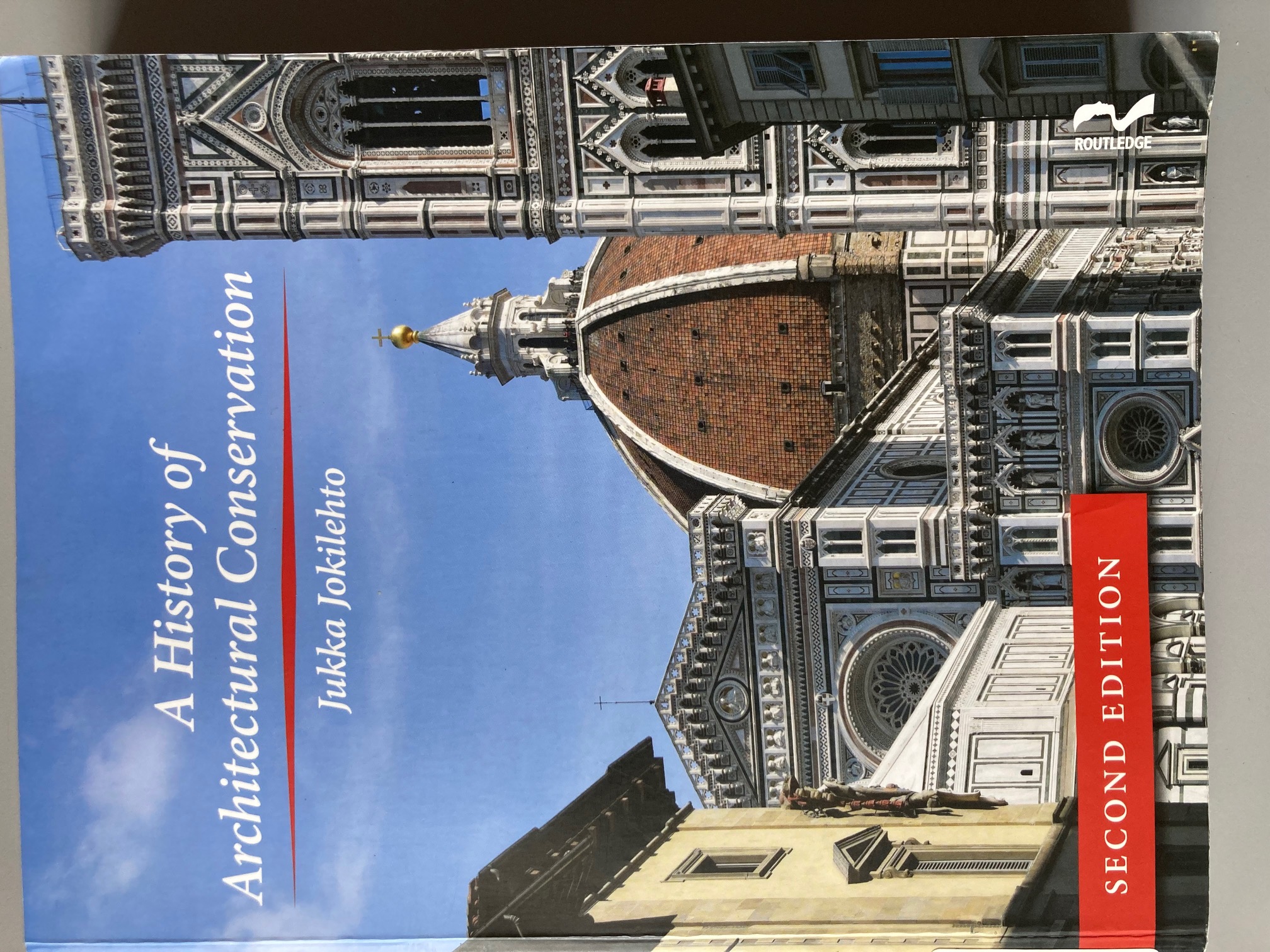It was a Monday morning like many others at the ICCROM Library. We answer emails, continue working on our projects, and assist visitors through our reference and document delivery services. But every day, first and foremost, all media consulted by users on the previous day are returned to their rightful places on the shelves. During this day’s routine, my gaze falls on a series of books in the section: "II : Theory and History of conservation". I pause and, with a heavy heart, I think of the author of this book, our dear Jukka Jokilehto, who recently passed. I would like to dedicate the December Resource of the Month to him and his book, which has had an immeasurable impact on our discipline.
Jukka Jokilehto's influence on built heritage conservation through his book, A History of Architectural Conservation, and its translation into several languages is profound and far-reaching. Jokilehto, a Finnish architect and esteemed expert in urban planning, in addition to being ICCROM’s former coordinator of the Architectural Conservation course on and former Deputy Director General, has significantly contributed to the field through his scholarly work and practical experience. After his retirement in 1998, he collaborated with ICOMOS and the World Heritage Centre, as well as with many universities.
Jukka Jokilehto's work provides a solid academic basis for understanding architectural conservation. Tracing the evolution of conservation philosophy and practices, his book offers a comprehensive overview that spans cultures and eras. This historical context is crucial for professionals and academics alike, helping them appreciate the multifaceted nature of conservation challenges.
The translation of this resource into multiple languages has transformed the global conversation on architectural conservation. It serves as a unifying resource, bringing together professionals, scholars and policymakers from diverse linguistic and cultural backgrounds. This global perspective fosters a more inclusive and holistic approach to conservation, acknowledging the rich diversity of built heritage worldwide.
A History of Architectural Conservation goes beyond historical narratives; it provides methodological insights with practical implications for conservation projects. By examining case studies and highlighting successful approaches to conservation, the book becomes a valuable resource for professionals engaged preserving historic structures. This practical orientation enhances the book's relevance in real-world conservation scenarios.
The book also delves into the ethical dimensions of architectural conservation. Jokilehto encourages a thoughtful, principled approach to conservation that respects the authenticity and integrity of cultural heritage. This emphasis on ethical considerations has had a lasting impact on shaping conservation practices that prioritize community engagement, respect for local values and sustainability.
[…] The survival of traditions, the identification of the true meaning of sites, and the regeneration of Values related to cultural identity are some of the concerns of the twenty-first century. Creative diversity of humanity has been recognized as one of the top priorities by UNESCO and the international community […]. Modern conservation does not mean a return to the past; rather it demands courage to undertake sustainable human development within the current reality and the potential of the existing cultural, physical and environmental resources. (Jokilehto, A history of architectural conservation, Second edition, Abingdon: Routledge, 2018, p. 453)
Jokilehto's masterpiece continues to shape the way conservationists approach the challenges of preserving our architectural heritage. The book stands as a testament to the enduring influence of one individual on advancing the cause of global architectural conservation.
As I continue reshelving, I realize once again the value of this unique Library collection composed of all these incredible resources written by incredible people. Libraries like ours are places for reading, studying and dialogue - where ideas are exchanged and synergies are created - thanks to all those who generously record their knowledge and experience, making it forever available to all readers.
Thank you, Jukka.

